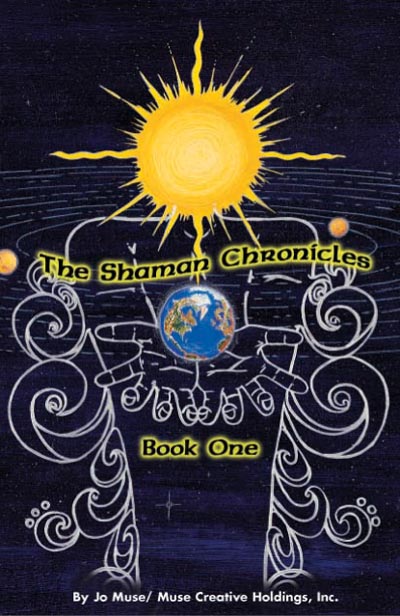The Shaman Chronicles, Book One
The Shaman Chronicles, Book One
The 7 Senses of Multicultural Marketing
By Jo Muse

The Practice:
It was April 1, 1991, and the Census Bureau had just released data that suggested that in less than five years, California would have a multicultural population of Latinos, African American and Asians that would be the majority. In the months that followed the news of this new majority, a shadow was cast on the marketing opportunity of brands. Some said marketers needed to start carving out portions of the marketing advertising budgets to meet this growing need to communicate with these new emerging consumers. Some said that the opportunity was not much to get excited about, particularly since many of these ethnic groups couldn’t afford to buy most products and services like other more affluent Americans.
There was also a group that ignored the insight. Instead they did business as usual. Unchanged. This group also went as far as to de-emphasize the growing diversity of the youth population, and the tremendous impact urban hip-hop culture was having on the world around us. They stuck to their guns and continued to practice marketing and strategic techniques that in all their brilliance and insight lacked a simple ingredient: inclusiveness.
These same strategists ran headfirst into the new digital revolution. From dot-coms to IPO’s, these marketing communications professionals didn’t see that one of the most important trends impacting how companies market to consumers would new ideas on race, ethnicity, and culture would impact behavior and attitudes of millions of Americans consumers.
One of the most overlooked aspects of the 1990 Census was the insistence of the U.S. Government to continue to use racial and ethnic labels invented in 1970. There were, White, Hispanic, Asian and black. Later black was modified to African American based on the insistence of people like Reverend Jackson. But, as early as 1980, the census takers noticed something that would later prove remarkable yet simple. The category “other” was becoming the third fastest growing ethnic group in America.
In 2000, the “other” category was eliminated for a chance for people to write in their racial preference. People now had the ability to write in the group they most identified with. Whether you’re Blango. Latialian. Or Germanese. We now live in a nation that in fact is a combination of ethnicity and race. Choosing your multicultural heritage is a personal choice.
This year we will learn more about how this new multicultural America is being formed. What we already known is the nation has grown 13% since 1990. The bulk of that growth is coming from a new generation of consumers we are becoming fond of calling Millenniums, or Generation Y. Whatever we call them, or they call themselves, this new generation of young people are graduating from high school about now. Here’s what we know about them. They are the most diverse of any consumer group before them. They also have no interest in being strapped to the traditional concepts of race, ethnicity and culture.
Theirs is a global community. Brought together not only by the Internet, but by a prosperous economy that has allowed many of them to travel abroad before high school graduation. They live in a smaller world, and as a new part of it, they are sure to change many of the fixed concepts we have about brands, consumerism and what motivates purchase intention.
These new Millenniums mix and match culture and language like they do their jeans and t-shirts. Hip-Hop is not racially based. Neither is techno music. It’s about fusion. So is art. Fashion and lifestyle. What they will teach their parents goes far further than the marketplace. They are changing the entire concept of sexual segregation.
In spite of the 60’s and the 70’s, America’s children were taught that mixed race couples were wrong. The uncertain future of mixed children was the deterrent. In the 80’s, with the acceptance of Anglo-Asian marriages stimulated by the Southeast Asia conflict and growing immigration trends, the stigma weakened. In 1993, 3 out of every 4 children born in America was of ethnic or mixed race. In 2000, Anglo births have leveled off. The trend is clear, multicultural population growth is being driven by mixed race marriages and births. Like Senator Bullworth intimates in the popular film by the same name, the only way for America to rid itself of racism and prejudice is to just screw it out. Couple by couple. Baby by Baby.
Before you repel from multiculturalism being embedded in the promiscuity of our children, there’s more. Another insight from the 2000 Census is where and what are multicultural markets.
Hispanic ad agencies have it wrong. There is no such thing as the Hispanic Market. Black agencies aren’t better. Wrong they are. The African American Market is a poorly crafted illusion of race and psychographics. So is the case with the so-called Asian consumer market and the now-defunct General Consumer Market.
What the census shows us is where this double-digit growth is coming from. It is coming from urban centers like Los Angeles, Houston, Dallas, Boston, San Jose and many others. Inside of these so-called DMA’s (Dominant Market Areas), the complexion of these markets shift with the specific immigration trends of people of color. In all of these markets, the multicultural populations are more than 35%. Well beyond the demographic tipping point of population trends and societal influence.
Atlanta is developing quite a different social fabric and cultural context brought about by the high populations of African Americans and Anglos. In San Jose the Chinese and Chicano population has also infected the local and regional consumer taste. The same is true about New York, Houston, Chicago and the most diverse city in the history of the world, Los Angeles.
Critical to this change in strategic messaging is the matter of media. In the last decade, the growing population clusters in key metros created havoc in conventional thinking about minority media. Center to this discussion is the use of statistical data that measures audience delivery based on units called Target Rating Points (TRP’S). The premise of a target rating point is to have a uniform unit of measure that allows us to compare apples with apples when deciding how to spend money in regional or national market targets.
In 1998, the TRP game was slammed by the emergence of the Spanish speaking audiences in places like Los Angeles, New York and Chicago. Moreover, African American audiences became more sophisticated in their media choices, going freely from network to cable, from the Internet to digital game systems. The media mavens in multinational agencies with global clients began to see the demographics change. They did a peculiar thing. They devalued the audience by either ignoring the data in the case of Hispanic radio stations that became leaders in their markets or emphasized to their clients that African Americans are “over-delivered” in network or general market station programs, making cable and selective media to black audiences superfluous. That year more than $210 billion of advertising was purchased in America. Only $4 billion of that total went to ethnic media vehicles.
This over delivery notion apparently doesn’t assist program syndicators like Don Cornelius of the perennial favorite Soul Train or The African Heritage Network under the direction of the New Jack deal maker, Frank Mercado. Selling their wares continues to be a mixture of perceptual voodoo and statistical remuneration to just get some of the media decision-makers to even consider their project. The presentation of the Nielsen numbers proves in some way that their programs are getting an audience size worth buying. The TRP game was invented by media professionals as a means of controlling media buying for better or worse.
In the next few years this will change. Not because of the TRP numbers are getting better for ethnic media. Instead the TRP statistical code will be broken. And in its place will be alternate methods for using all forms of media including the hard-to-measure Asian Market and ethnic community newspapers.
Breaking the code will take the collaboration of demographers, statisticians, media research executives and government bureaucrats. The FCC has exposed the bogus nature of the TRP game. They have formulated standards and practices that give minority advertising media and agencies a level playing field when it comes to the trillions of dollars of paid media in America.
Target Rating Points do not have to be calculated with the premise of getting more for a large source before filling in the gaps with less valued media like cable and minority media. In fact, in Europe, the TRP calculation is done somewhat in reverse by computer models that first collect a larger cluster of the so-called smaller TRP levels, then build in the larger TRP gathering media. The key to this system is the notion that the smaller TRP rating for a medium makes it more attractive based on comparable unit costs. And if that were the case with ethnic media many more ethnic newspapers would get on the media buy sheet. First.
Marketers can benefit from a deeper understanding of how ethnic media of all kinds can be utilized during media planning. Despite the obvious efficacy that ethnic mediums have consumers that read, listen or watch them for their cultural and language specialization, today’s traditional media buyer doesn’t go beyond their knowledge comfort zone to find out why ethnic media makes good business sense. The decades of being overlooked has also increased the levels of frustration ethnic media representative’s experience in the market place. The Madison Avenue Initiative, lead by Butch Graves of Black Enterprise Magazine and the Rev. Sharpton continue the fight to convince media planning companies that it’s good business to buy ethnic media. In the West, Sandy Close and the New California Media is a coalition of several hundred ethnic media companies committed to having their voices heard in the executive boardrooms of multinational companies. Advocacy will not pressure corporations into making bad business decisions. Instead I encourage ethnic media companies and nationally respected researchers and demographers to get together and simply break the code of the Target Rating Point. This can be accomplished through the assertion of a Multicultural Group Rating Point numerical algorithm that values the growing ethnic population and the impact culture and language have on multicultural consumers. Properly done, this new statistical model can inform strategic media buying decisions in a fashion that encourages the idea that good business thinking and multicultural marketing are not mutually exclusive.
As brand management concentrates on the marketing strategies to come in the new century, they will be challenged to provide key markets with the media and message choices that can build and capitalize on this diversity. Those that try the same marketing efforts in Miami as they do in Boston or Chicago are bound to discover that the general market simply doesn’t exist anymore.
Instead, astute brand management will discover the power that culture and lifestyle have on consumer attitudes. They will also come to understand the unique social contributions that people of African, Asian, European and Hispanic descent have on each other and how old concepts like race and ethnicity lose their hold on the nature of human beings and how we interact in the marketplace.
And from here, we will create a new multicultural marketing possibility.
The Seven Senses of Multicultural Marketing
1. Hear the Footsteps
The competition is looking for an advantage
2. See the Battleground
The fight starts in the marketplace
3. Taste the Culture
Increase your multicultural intelligence
4. Touch the Customer
Participate in your customer’s life
5. Smell out the real issues
Learn the aroma of special interests
6. Be Telephathic
Make sure your boss gets it
7. Create the future
Tracking a new multicultural America
The above excerpt is published with the author’s permission; any parties seeking similar use must also obtain prior permission.
Jo Muse, Chairman, Muse Creative Holdings, LLC






